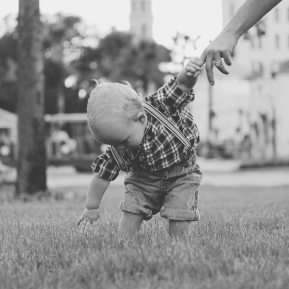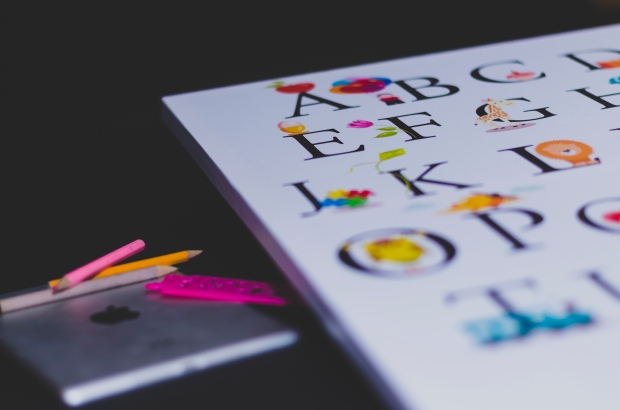 Killy joy: A person who spoils the enjoyment of others
Killy joy: A person who spoils the enjoyment of others
In the kindergarten I work at, it is difficult for children to go outside of the box and use the classroom materials for their own exploration and creativity (unless it’s painting or drawing, but even within that there are certain rules such as not drawing on the table/easel). The reason for this is because the materials we have are specifically designed for a child to use them a certain way. Even simple tasks like cleaning an orange press, we as teachers have these steps to show them.
When things get out of hand, meaning, when the child does not do what we asked or showed them to do, we tend to reprimand them – sometimes with a scowl, or a frown, sometimes changing our voice tonality to match the disapproval or even judging and shouting at them for what they’ve done.
But have we ever stepped back and just observed what they did? To see if whether that moment with the child was an expression of their own creativity and going outside the box?
Take for example these real situations that happened in my classroom:
- Two boys were washing glasses, and one of the boys decided to put water in his hair. The other boy saw how it changed the shape of the boys hair, so helped shape the hair into a style. Laughing, they played with the boy’s hair.
- A child sees himself in a mirror and starts dancing, doing cartwheels, watching himself perform tricks.
- A child (instead of washing the juicing equipment) set the equipment up in the sink in a way where when he turns on the water, the water goes through the equipment, creating a new structure for water to go into the sink. He called other children to see his invention.
How did we as teachers respond? Basically what you would expect – a lot of no’s and stop that’s, telling what the child should do next.
When we adults/teachers see these sort of things, we tend to immediately think they are rebelling against the classroom rules, and we react, stop them, and/or tear them away from the situation. We don’t and cannot take that step back to see the natural creativity that came forth because is not within school rules and we don’t have time to look deeper. We got 20+ kids to manage! How do we even have time to look at the potentials and strengths of the child?
In creative – out of box situations like these, children are not deliberately rebelling from us/classroom rules but actually forget about the rules because they get so caught up in the moment, engaged in a new approach/way of working with something and just go for it — using the opportunity to try it out. The new moment of creation for children is more important than the old classroom rules/what they are ’suppose’’ to do, because it’s new and that process is fun for them. Though a point to mention is yes, sometimes their creations may create outflows that will disrupt the flow of the classroom environment (such as a child gets excited about what they discover and get the other children excited and classroom work is disrupted).
BUT – How many times do we as adults have an idea on something to try out/do and just go for it? Not so many… we tend to hold back and don’t go forward with things because we allow thoughts and memories of past failures limit us from just TESTING and SEEING what is possible…
I’d say, children are naturally creative in that they can make new things out of something we as adults think are used/meant for one purpose. The problem is when our way of thinking get in the way of child’s natural creativity and we become these authority figures that stop or ‘kill’’ the joy and opportunity for the child to continue exploring this new way of using the material.
I’ve been seeing these moments of creativity in children more and more when I’m around them, where they will use classroom materials in ways not meant to be used according to what we as teachers want, and — as much as I want to allow them to continue — I cannot , due to my job position, which is why I am currently trying to find ways where I can direct the child to perhaps continue this sort of exploration/creativity in another environment.
For example, I told V, this one child who placed a cup over the faucet to watch how the water came out that perhaps he can do this at home, but not here in the kindergarten. So I in a way approached it (as best I could) gently, communicating that this type of creativity may be possible in the home environment, but not here. Even writing this now, I could have specified my approach by re-iterating the procedure on how we wash glasses in the kindergarten, and that there may be different procedures at home so ask your mom and dad if it’s ok to do this…
The problem is, with managing 20+ children in a classroom, staff members cannot actually allow children to freely express and test things out for themselves unconditionally, because they are in a confined environment with items/materials and thus rules need to be applied – however, are these rules in the best interest of children, where their mind, being and body are taken in consideration? No way! We have for CENTURIES formed our classroom rules based on our (adult-teacher) preferences, likes and wants. No where do we take the children 100% into consideration.
I say, a major change needs to take place. We need to uproot the current education system, get to understand more of the child’s mind, being and body and see how we can shape and design the future for children.
The best resources to start is studying the Parenting Series (even if you are not a parent!) and walking your own understanding of how human consciousness works through DIP Lite.
 I was inspired by a video clip of a father making funny faces to his baby and the baby was laughing hysterically.
I was inspired by a video clip of a father making funny faces to his baby and the baby was laughing hysterically. Killy joy: A person who spoils the enjoyment of others
Killy joy: A person who spoils the enjoyment of others I had for a long time reacted to 4 year old V for his behavior and difficulty listening to teachers and children. He is different in that he cannot connect easily with the school materials and/or with other children by socializing.
I had for a long time reacted to 4 year old V for his behavior and difficulty listening to teachers and children. He is different in that he cannot connect easily with the school materials and/or with other children by socializing.  I attended a parent’s evening where the other teachers and I got to give presentations on what we do with the children and answer questions for the parents.
I attended a parent’s evening where the other teachers and I got to give presentations on what we do with the children and answer questions for the parents.